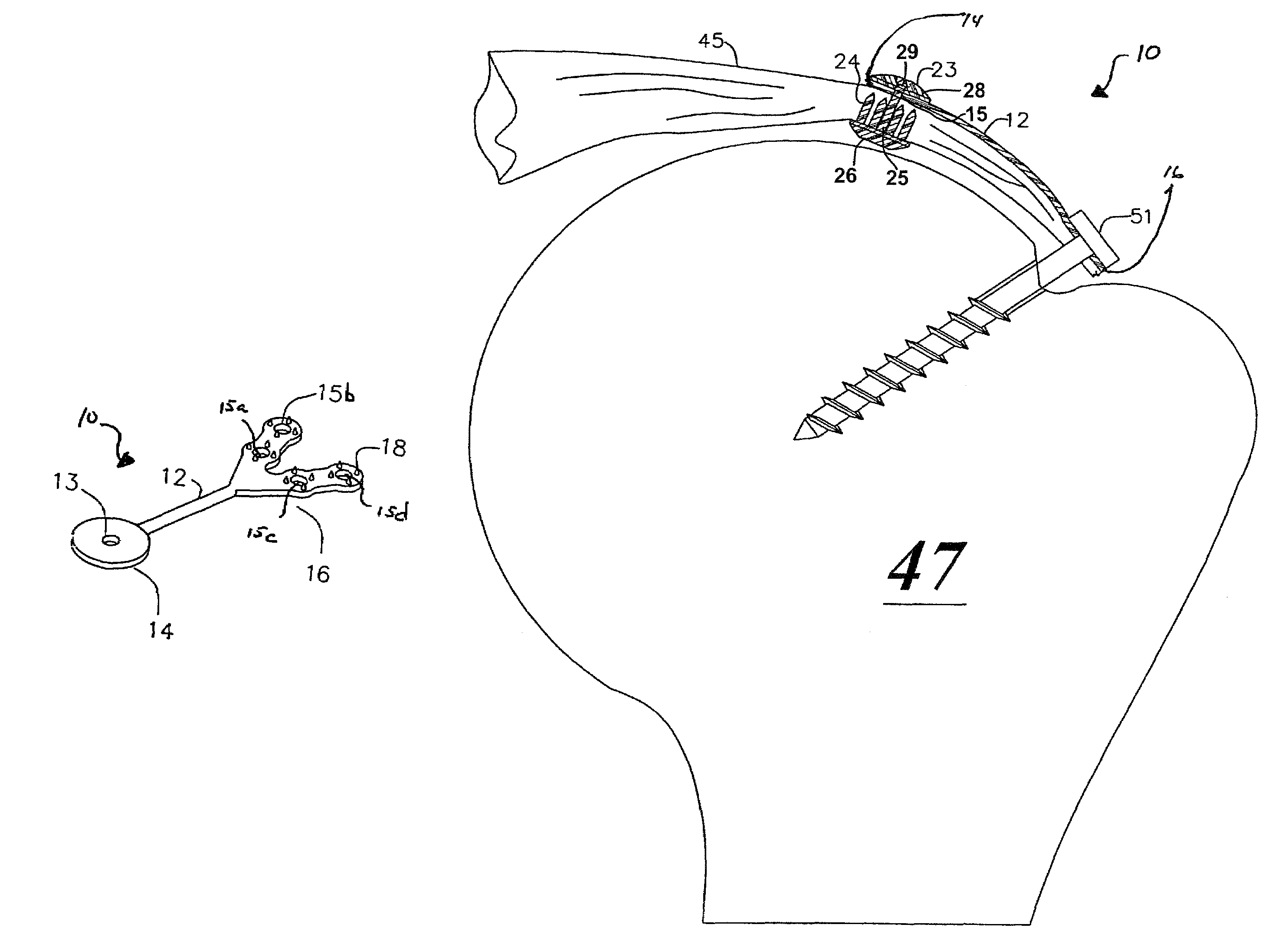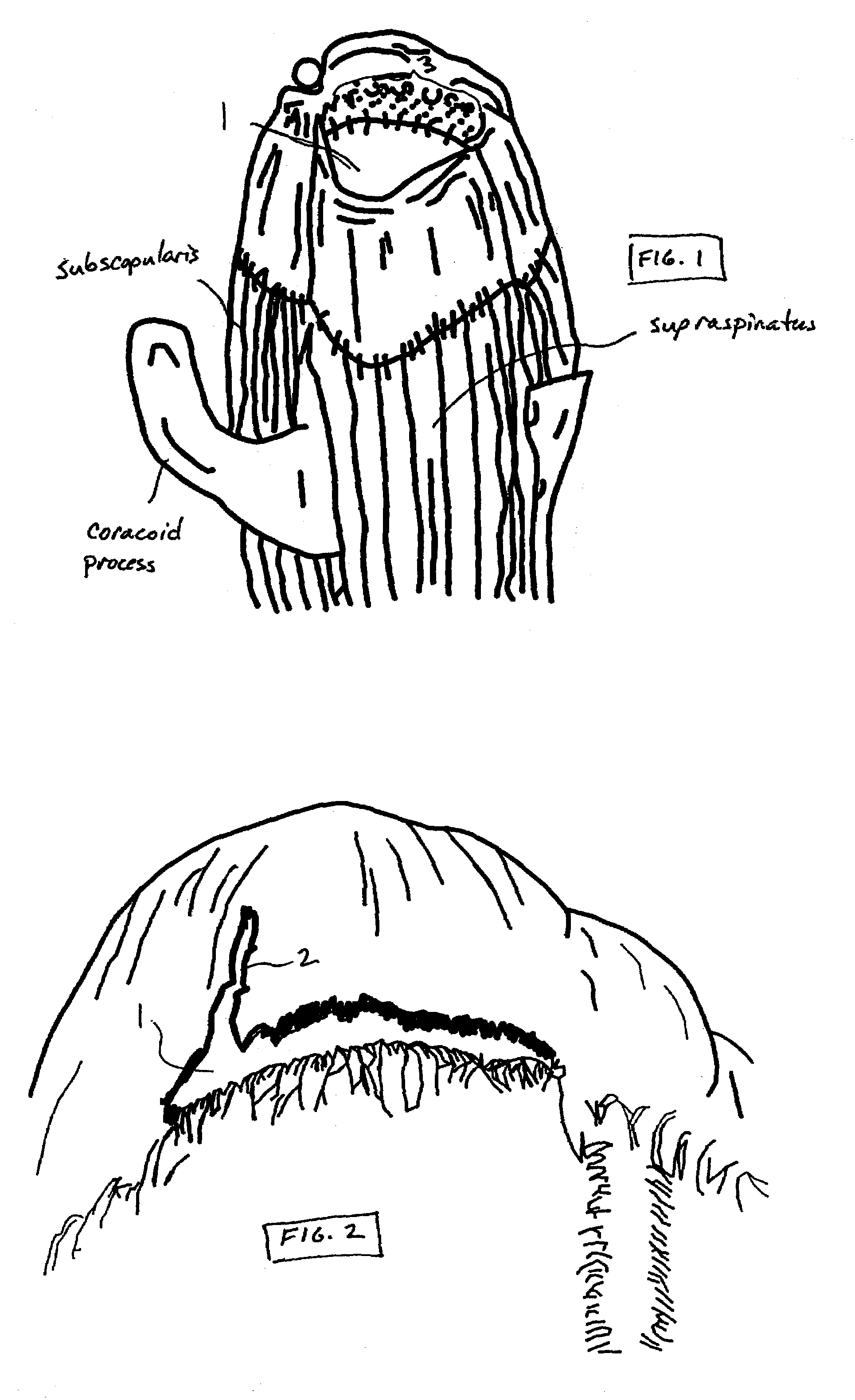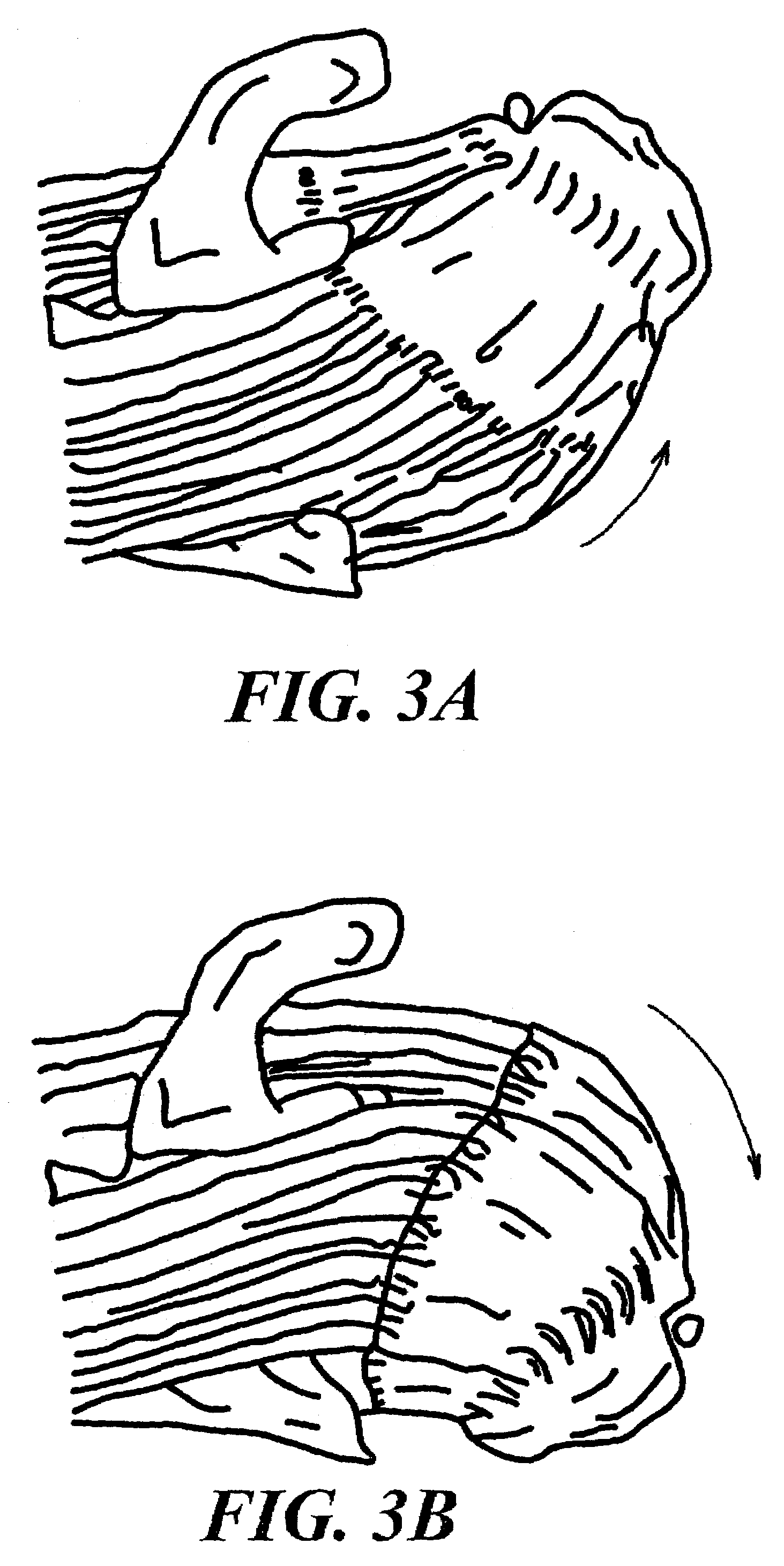Apparatus and method for use in repairs of injured soft tissue
a technology of apparatus, which is applied in the field of apparatus and method for repairing torn or avulsed soft tissue, can solve the problems of pain, weakness and loss of function, torn free edge of tendon, poor quality tissue, etc., and achieves the effects of improving range of motion, promoting blood flow, and changing the stress on the injured soft tissu
- Summary
- Abstract
- Description
- Claims
- Application Information
AI Technical Summary
Benefits of technology
Problems solved by technology
Method used
Image
Examples
Embodiment Construction
[0040]The present invention overcomes the shortcomings of current soft tissue repair techniques by incorporating one or more bridge members of selected length to accommodate proper attachment across injured tissue in connection with the repair of such tissue. For illustrative purposes of this document, embodiments of the present invention and methods for using embodiments of the present invention are described as it may be used to repair rotator cuff tears. Those skilled in the art will recognize that the present invention is capable of repair of other soft tissue injuries without departing from the spirit or scope of the present invention.
[0041]Referring to FIG. 4, the present invention generally comprises a bridge member 10 that includes a bridging section 12 to which is attached a first connector end 14 and a second connector end 16. The bridging section 12 is adapted with a selected length adequate to span the injured tissue and to provide attachment to healthy attachment points...
PUM
 Login to View More
Login to View More Abstract
Description
Claims
Application Information
 Login to View More
Login to View More - R&D
- Intellectual Property
- Life Sciences
- Materials
- Tech Scout
- Unparalleled Data Quality
- Higher Quality Content
- 60% Fewer Hallucinations
Browse by: Latest US Patents, China's latest patents, Technical Efficacy Thesaurus, Application Domain, Technology Topic, Popular Technical Reports.
© 2025 PatSnap. All rights reserved.Legal|Privacy policy|Modern Slavery Act Transparency Statement|Sitemap|About US| Contact US: help@patsnap.com



